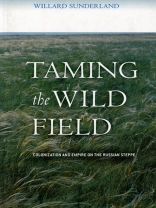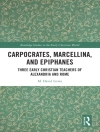Stretching from the tributaries of the Danube to the Urals and from the Russian forests to the Black and Caspian seas, the vast European steppe has for centuries played very different roles in the Russian imagination. To the Grand Princes of Kiev and Muscovy, it was the ‘wild field, ‘ a region inhabited by nomadic Turko-Mongolic peoples who repeatedly threatened the fragile Slavic settlements to the north. For the emperors and empresses of imperial Russia, it was a land of boundless economic promise and a marker of national cultural prowess. By the mid-nineteenth century the steppe, once so alien and threatening, had emerged as an essential, if complicated, symbol of Russia itself.Traversing a thousand years of the region’s history, Willard Sunderland recounts the complex process of Russian expansion and colonization, stressing the way outsider settlement at once created the steppe as a region of empire and was itself constantly changing. The story is populated by a colorful array of administrators, Cossack adventurers, Orthodox missionaries, geographers, foreign entrepreneurs, peasants, and (by the late nineteenth century) tourists and conservationists. Sunderland’s approach to history is comparative throughout, and his comparisons of the steppe with the North American case are especially telling.Taming the Wild Field eloquently expresses concern with the fate of the world’s great grasslands, and the book ends at the beginning of the twentieth century with the initiation of a conservation movement in Russia by those appalled at the high environmental cost of expansion.
Table des matières
Introduction: Steppe Building1. Frontier Colonization
The Rus’ Land and the Field
The Wild Field and the Tsardom
The Empire and the Steppe2. Enlightened Colonization
Reason’s Territory
Reason’s Process3. Bureaucratic Colonization
The Vastness and the Nation
The Bureaucrats and the Settlers4. Reformist Colonization
The System and the Peasants
The Pioneers and the Public5. ‘Correct Colonization’
Colonizing Capacities and the Russian Element
The Dwindling Prairie and the Growing BorderlandConclusion: Steppe Building and Steppe DestroyingNote on Archival Sources
Index
A propos de l’auteur
Willard Sunderland is Associate Professor of History at the University of Cincinnati.












